
Dr. Scott W. Fleming
@scottwfleming.bsky.social
Branch Manager at Space Telescope Science Institute working in the MAST archive. Astronomy PhD. Studies stars and exoplanets. Loves programming. Opinions are my own. He/Him/His
Pinned

For my fIrst post, I want to highlight our open-source sonification Python package, Astronify! It's a package to sonify 1D data, esp. light curves from Kepler/K2/TESS. It provides alternative ways to analyze/preview, and most importantly increases accessibility to the data! astronify.readthedocs.io
We added some nice features to our JWST Search interface. HST rolling out in next couple months, along with more goodies.
Feature update: we've added album previews to our JWST Search interface! Also included with our update is a Light/Dark mode toggle. archive.stsci.edu/contents/new...

October 2, 2025 at 8:30 PM
We added some nice features to our JWST Search interface. HST rolling out in next couple months, along with more goodies.
Reposted by Dr. Scott W. Fleming
Technicians recently tested two major deployments for the Nancy Grace Roman Space Telescope: the Deployable Aperture Cover (DAC) and the Solar Array Sun Shield (SASS): go.nasa.gov/41X95PN #NASARoman 🔭 🧪
August 27, 2025 at 5:22 PM
Technicians recently tested two major deployments for the Nancy Grace Roman Space Telescope: the Deployable Aperture Cover (DAC) and the Solar Array Sun Shield (SASS): go.nasa.gov/41X95PN #NASARoman 🔭 🧪
When I decided to pursue astronomy as a career, inspired by Star Wars, there were no known real planets orbiting stars like the Sun. Now we can take baby photos and SEE them. Incredible, and building off of decades of work by others who came before to get us collectively to this place.
A very hungry planet! 🪐
What appears to be a ripple in space is actually a newborn planet, eating its way through its dusty cradle around a younger version of our Sun 🌞
Read more: https://www.eso.org/public/images/potw2534a/
🔭 🧪 #exoplanets
📷 ESO/R. van Capelleveen et al.
What appears to be a ripple in space is actually a newborn planet, eating its way through its dusty cradle around a younger version of our Sun 🌞
Read more: https://www.eso.org/public/images/potw2534a/
🔭 🧪 #exoplanets
📷 ESO/R. van Capelleveen et al.
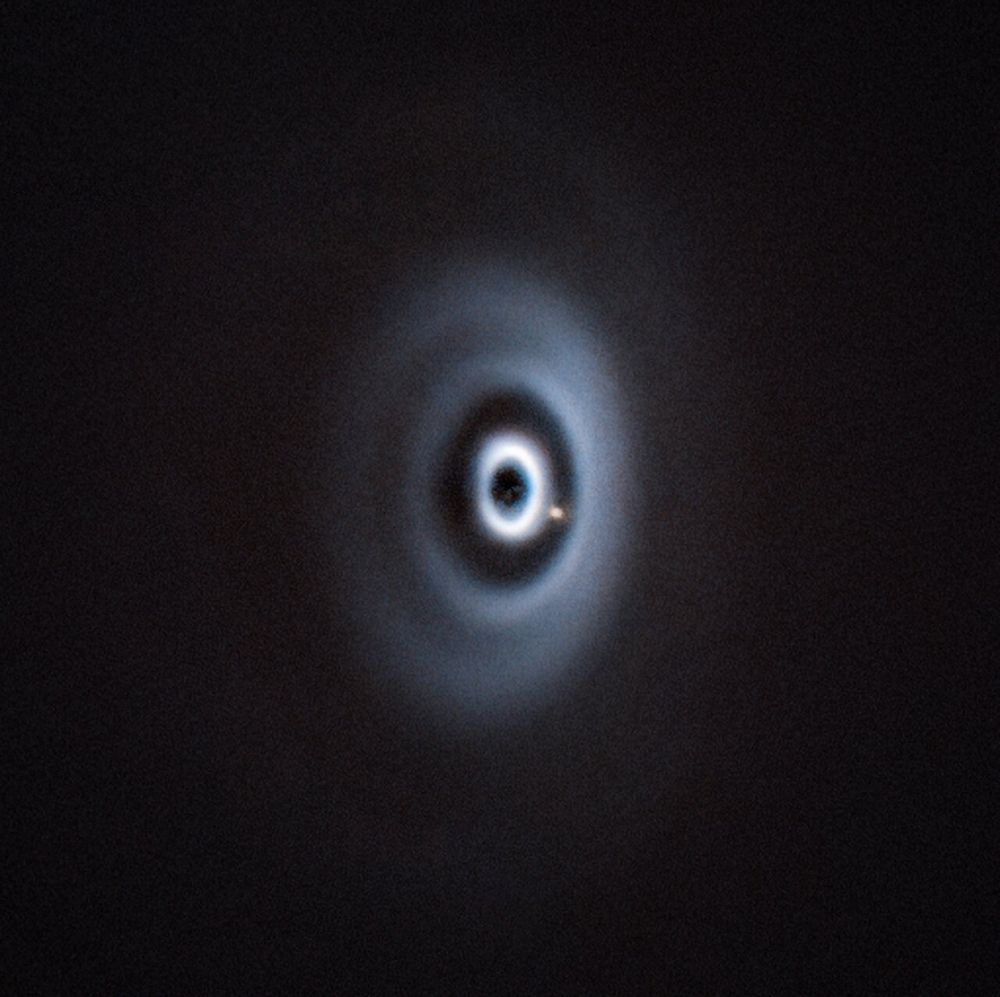
August 26, 2025 at 3:09 PM
When I decided to pursue astronomy as a career, inspired by Star Wars, there were no known real planets orbiting stars like the Sun. Now we can take baby photos and SEE them. Incredible, and building off of decades of work by others who came before to get us collectively to this place.
Four years' worth of Ca HK activity measurements with more planned on the way. Great dataset for anyone exploring stellar activity now at MAST!
New HLSP: OWLS, a long-term spectroscopic stellar activity monitoring program with the ARC 3.5 m Telescope at Apache Point Observatory led by @brettmorr.is . OWLS produces time series Ca II H & K emission measurements to probe activity levels + search for activity cycles. archive.stsci.edu/hlsp/owls

August 20, 2025 at 3:51 PM
Four years' worth of Ca HK activity measurements with more planned on the way. Great dataset for anyone exploring stellar activity now at MAST!
@commondescentpod.bsky.social Motivation for a Silver Screen episode on Star Wars? Best Star Wars planets for optimal fossilization? What kind of dinosaur was Boba Fett riding in the Christmas Special? Were krayt dragons actually dragons? Dragon*con topic perhaps!? www.wired.com/story/an-anc...
August 19, 2025 at 3:25 PM
@commondescentpod.bsky.social Motivation for a Silver Screen episode on Star Wars? Best Star Wars planets for optimal fossilization? What kind of dinosaur was Boba Fett riding in the Christmas Special? Were krayt dragons actually dragons? Dragon*con topic perhaps!? www.wired.com/story/an-anc...
Reposted by Dr. Scott W. Fleming
The more we look with #NASAWebb, the more we find! The latest discovery? A tiny new moon orbiting Uranus. It’s just six miles (9.6 kilometers) in diameter: science.nasa.gov/blogs/webb/2... 🔭 🧪
August 19, 2025 at 3:04 PM
The more we look with #NASAWebb, the more we find! The latest discovery? A tiny new moon orbiting Uranus. It’s just six miles (9.6 kilometers) in diameter: science.nasa.gov/blogs/webb/2... 🔭 🧪
Reposted by Dr. Scott W. Fleming
Job for AWS experts – become Senior Cloud Software Developer at @stsci.edu, apply by Sept 19:
recruiting2.ultipro.com/SPA1004AURA/...
recruiting2.ultipro.com/SPA1004AURA/...

recruiting2.ultipro.com
August 19, 2025 at 2:35 PM
Job for AWS experts – become Senior Cloud Software Developer at @stsci.edu, apply by Sept 19:
recruiting2.ultipro.com/SPA1004AURA/...
recruiting2.ultipro.com/SPA1004AURA/...
Reposted by Dr. Scott W. Fleming
Tim Rhue, education specialist at STScI, packs up new tactile panels based on the first #NASAWebb image of Uranus. These panels are being sent to museums, libraries, and other educational sites, so that they can share this tactile experience with their audiences. 🔭



August 12, 2025 at 8:37 PM
Tim Rhue, education specialist at STScI, packs up new tactile panels based on the first #NASAWebb image of Uranus. These panels are being sent to museums, libraries, and other educational sites, so that they can share this tactile experience with their audiences. 🔭
Ever wondered what the "MAST Sky" looks like, from our ~6 PB of data spanning 3 decades...check this out! spacetelescope.github.io/mast-blog/ma...
Really fun project led by the very talented Julie Imig at MAST, showing mission coverage sky-projected! They make VERY good video backgrounds, btw. 🔭
Really fun project led by the very talented Julie Imig at MAST, showing mission coverage sky-projected! They make VERY good video backgrounds, btw. 🔭
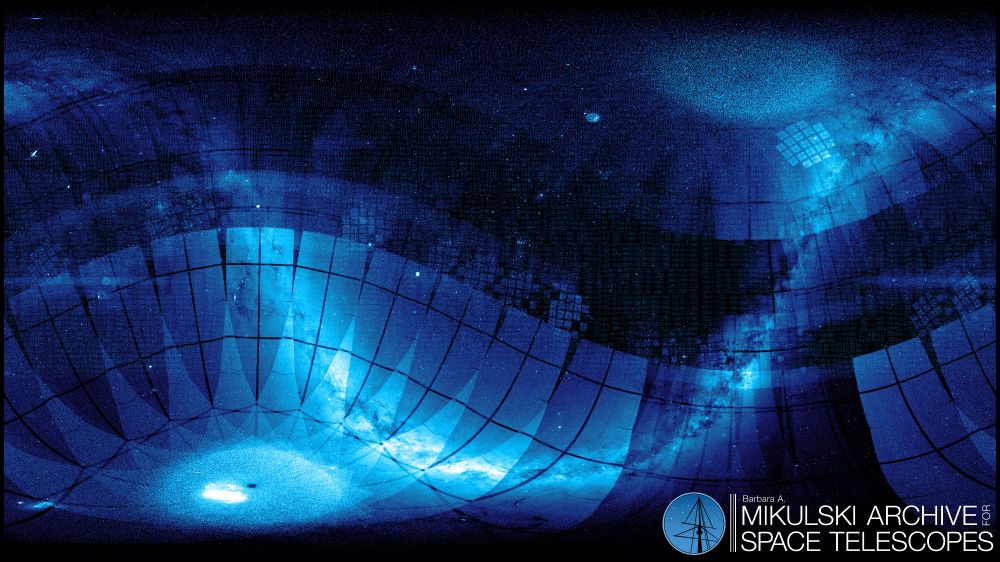

July 31, 2025 at 9:12 PM
Ever wondered what the "MAST Sky" looks like, from our ~6 PB of data spanning 3 decades...check this out! spacetelescope.github.io/mast-blog/ma...
Really fun project led by the very talented Julie Imig at MAST, showing mission coverage sky-projected! They make VERY good video backgrounds, btw. 🔭
Really fun project led by the very talented Julie Imig at MAST, showing mission coverage sky-projected! They make VERY good video backgrounds, btw. 🔭
Reposted by Dr. Scott W. Fleming
NASA's new PUNCH mission is a constellation of 4 small satellites that collectively provide an unprecedented view of giant eruptions breaking free from the Sun.
This first-release video compresses about 6 days of observations. 🧪🔭
science.nasa.gov/blogs/punch/...
This first-release video compresses about 6 days of observations. 🧪🔭
science.nasa.gov/blogs/punch/...
July 28, 2025 at 8:44 PM
NASA's new PUNCH mission is a constellation of 4 small satellites that collectively provide an unprecedented view of giant eruptions breaking free from the Sun.
This first-release video compresses about 6 days of observations. 🧪🔭
science.nasa.gov/blogs/punch/...
This first-release video compresses about 6 days of observations. 🧪🔭
science.nasa.gov/blogs/punch/...
Reposted by Dr. Scott W. Fleming
Hooray for three years of paw-sitively amazing #NASAWebb science! To celebrate, the telescope examined a singular “toe bean” of the Cat’s Paw Nebula, a massive star-forming region. Webb reveals gas, dust, and massive young stars: webbtelescope.pub/4khJK9T 🔭
Reply with an image of your pet’s paws! 🐾
Reply with an image of your pet’s paws! 🐾

July 10, 2025 at 2:05 PM
Hooray for three years of paw-sitively amazing #NASAWebb science! To celebrate, the telescope examined a singular “toe bean” of the Cat’s Paw Nebula, a massive star-forming region. Webb reveals gas, dust, and massive young stars: webbtelescope.pub/4khJK9T 🔭
Reply with an image of your pet’s paws! 🐾
Reply with an image of your pet’s paws! 🐾
This is what we are doing after Roman. But only if NASA science funding is kept at the levels we need. It takes decades to plan and build these missions, and it’s only possible through steady public support AND stable federal funding throughout the years.
My eyes are fixed on the future, even in volatile times.... 🚀🔭 🧪 🪐 www.youtube.com/watch?v=XJwD...

NASA’s Habitable Worlds Observatory Will Search for Life
YouTube video by NASA Goddard
www.youtube.com
July 8, 2025 at 8:49 PM
This is what we are doing after Roman. But only if NASA science funding is kept at the levels we need. It takes decades to plan and build these missions, and it’s only possible through steady public support AND stable federal funding throughout the years.
The work our talented team does to ensure the public learns about discoveries made with NASA telescopes, and our place in the Universe, risks being lost without at least keeping NASA’s funding flat. The current budget plan removes almost all of it. If this matters to you, make sure your reps know.
The Space Telescope Science Institute continues to expand the frontiers of space astronomy. 🔭 🧪

Astronomy for All - Space Telescope Science Institute #shorts
YouTube video by Space Telescope Science Institute
youtube.com
July 2, 2025 at 8:28 PM
The work our talented team does to ensure the public learns about discoveries made with NASA telescopes, and our place in the Universe, risks being lost without at least keeping NASA’s funding flat. The current budget plan removes almost all of it. If this matters to you, make sure your reps know.
Reposted by Dr. Scott W. Fleming
June 14, 2025 at 5:37 PM
Reposted by Dr. Scott W. Fleming
I present the #astrocode Pyriod for interactive or scripted pre-whitening frequency analysis of astronomical time series data. See the demo of #stellarastro #TESS data analysis of a pulsating white dwarf star. Check it out at github.com/keatonb/Pyriod/.
Had to withdraw my #AAS246 poster due to COVID, but let me demo "Pyriod: Interactive Pre-Whitening Frequency Analysis in Python." Here is a quick guide to reproducing the analysis of TESS data on a pulsating white dwarf from Bell et al. (2019, ui.adsabs.harvard.edu/abs/2019A%26A...632A..42B).
June 9, 2025 at 8:26 PM
I present the #astrocode Pyriod for interactive or scripted pre-whitening frequency analysis of astronomical time series data. See the demo of #stellarastro #TESS data analysis of a pulsating white dwarf star. Check it out at github.com/keatonb/Pyriod/.
Reposted by Dr. Scott W. Fleming
Excited for #BlackSpaceWeek 2025! #BlackInAstro
Schedule for #BlackSpaceWeek 2025! Links to register coming soon🤭 Which event/panels pique your interest? 👀

May 23, 2025 at 4:30 PM
Excited for #BlackSpaceWeek 2025! #BlackInAstro
Reposted by Dr. Scott W. Fleming
Have you ever started a Python process, realized that you made a mistake, immediately hit Ctrl+C to interrupt it and then waited a surprisingly long time to get the command line back?
This delay is caused by a bug in the compiled #Python extension.
:thread:
This delay is caused by a bug in the compiled #Python extension.
:thread:
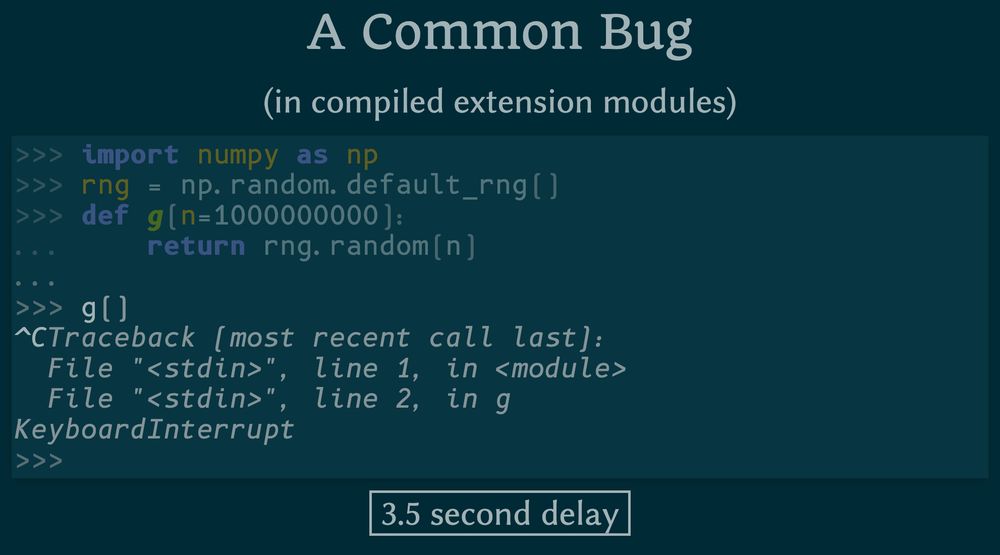
May 20, 2025 at 3:46 PM
Have you ever started a Python process, realized that you made a mistake, immediately hit Ctrl+C to interrupt it and then waited a surprisingly long time to get the command line back?
This delay is caused by a bug in the compiled #Python extension.
:thread:
This delay is caused by a bug in the compiled #Python extension.
:thread:
Professional astronomers: Follow this official account that will keep researchers up to date on preparing for and participating in Roman research!
🚀We are ready for launch...of the official social media account for doing science with #NASARoman!
This account will keep researchers informed about opportunities for preparing for and participating in Roman science.
Follow us to stay involved. #ExpandOurView
This account will keep researchers informed about opportunities for preparing for and participating in Roman science.
Follow us to stay involved. #ExpandOurView
May 16, 2025 at 1:54 PM
Professional astronomers: Follow this official account that will keep researchers up to date on preparing for and participating in Roman research!
Learn how to use our powerful cloud platforms at the AAS meeting in Alaska! We need more interested attendees! 🔭
Join us at AAS246 for our data challenge workshop!
Working on our cloud platform, you'll learn about astroquery, catalog cross-matching, cutouts, and more. There are still PLENTY of spots open for those attending #aas246 in Alaska!
Registration: aas.org/meetings/aas...
Working on our cloud platform, you'll learn about astroquery, catalog cross-matching, cutouts, and more. There are still PLENTY of spots open for those attending #aas246 in Alaska!
Registration: aas.org/meetings/aas...
AAS 246: Registration | American Astronomical Society
aas.org
May 15, 2025 at 8:41 PM
Learn how to use our powerful cloud platforms at the AAS meeting in Alaska! We need more interested attendees! 🔭
Reposted by Dr. Scott W. Fleming
NEW: Those undulations aren’t clouds—they’re Jupiter’s aurora as seen by #NASAWebb. Webb observed light from a particular molecule, represented in orange, and found that the planet’s aurora fluctuates on timescales of minutes or seconds: webbtelescope.pub/4kbsB20 🔭 🧪
May 12, 2025 at 12:02 PM
NEW: Those undulations aren’t clouds—they’re Jupiter’s aurora as seen by #NASAWebb. Webb observed light from a particular molecule, represented in orange, and found that the planet’s aurora fluctuates on timescales of minutes or seconds: webbtelescope.pub/4kbsB20 🔭 🧪
Reposted by Dr. Scott W. Fleming
Experience the Cosmic Cliffs like never before! #NASAWebb’s iconic image of dusty “mountains” and “valleys” is featured in a new 3D visualization from NASA’s Universe of Learning: webbtelescope.pub/4jRHIh9 🔭 🧪
May 7, 2025 at 6:02 PM
Experience the Cosmic Cliffs like never before! #NASAWebb’s iconic image of dusty “mountains” and “valleys” is featured in a new 3D visualization from NASA’s Universe of Learning: webbtelescope.pub/4jRHIh9 🔭 🧪
For those attending the AAS in the summer, consider signing up to take our data workshop where you'll learn how to effectively use our cloud platforms to query for data, access catalogs, and create image cutouts! Very relevant for TESS and Roman astronomers in particular, but all are welcome!
Join us at AAS246 for our Dr. Nefarious data challenge workshop!
Working on our cloud platform, you'll learn about astroquery, catalog cross-matching, cutouts, and more. Can you solve the challenges in time to prevent the evil Dr. Nefarious from erasing MAST?
Registration: aas.org/meetings/aas...
Working on our cloud platform, you'll learn about astroquery, catalog cross-matching, cutouts, and more. Can you solve the challenges in time to prevent the evil Dr. Nefarious from erasing MAST?
Registration: aas.org/meetings/aas...

April 30, 2025 at 6:03 PM
For those attending the AAS in the summer, consider signing up to take our data workshop where you'll learn how to effectively use our cloud platforms to query for data, access catalogs, and create image cutouts! Very relevant for TESS and Roman astronomers in particular, but all are welcome!
Reposted by Dr. Scott W. Fleming
Astronomers will use #NASARoman to improve our understanding of the universe. See the bigger picture with Roman. Credit: NASA, STScI, Caltech/IPAC. 🔭 🧪
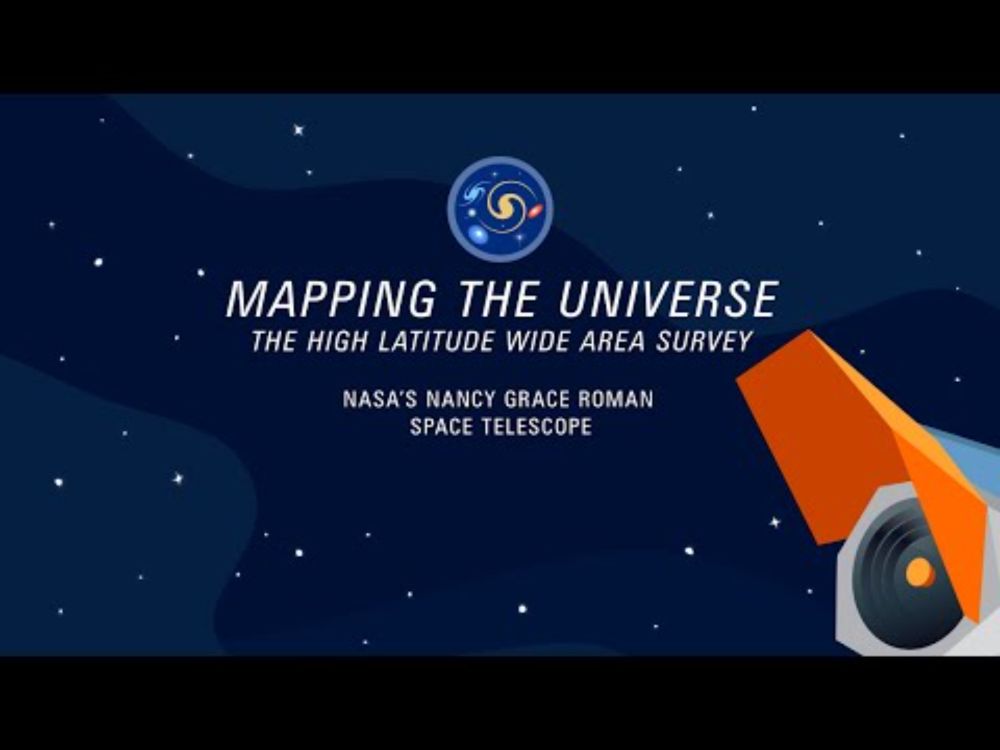
Nancy Grace Roman Space Telescope: Mapping the Universe
YouTube video by Space Telescope Science Institute
youtu.be
April 29, 2025 at 5:04 PM
Astronomers will use #NASARoman to improve our understanding of the universe. See the bigger picture with Roman. Credit: NASA, STScI, Caltech/IPAC. 🔭 🧪
Reposted by Dr. Scott W. Fleming
A project I worked on got its official release today.
ViewSpace Interactive Image Tours offer a guided exploration of astronomical images.
Designed to be used on touch screens in museums and science centers, they are also fun to explore on your own 🔭🧪🎢
www.universe-of-learning.org/contents/new...
ViewSpace Interactive Image Tours offer a guided exploration of astronomical images.
Designed to be used on touch screens in museums and science centers, they are also fun to explore on your own 🔭🧪🎢
www.universe-of-learning.org/contents/new...
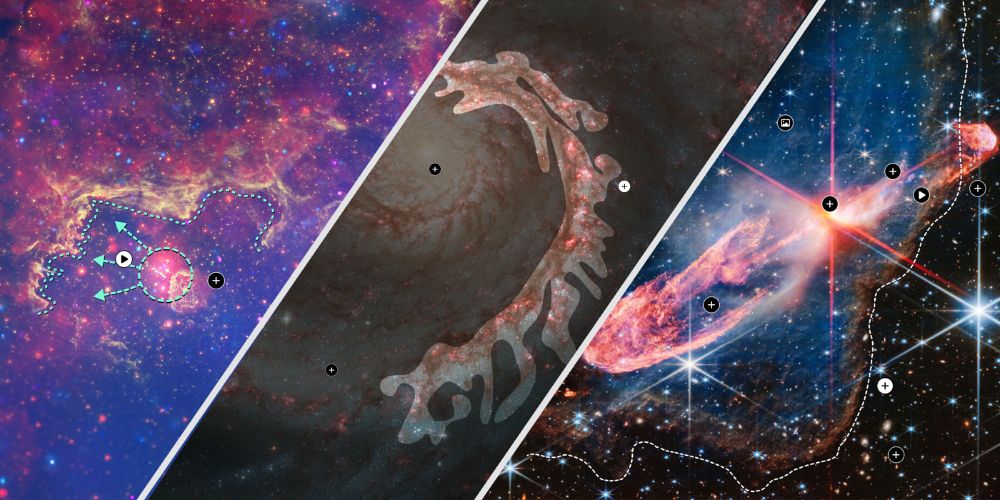
April 29, 2025 at 5:33 PM
A project I worked on got its official release today.
ViewSpace Interactive Image Tours offer a guided exploration of astronomical images.
Designed to be used on touch screens in museums and science centers, they are also fun to explore on your own 🔭🧪🎢
www.universe-of-learning.org/contents/new...
ViewSpace Interactive Image Tours offer a guided exploration of astronomical images.
Designed to be used on touch screens in museums and science centers, they are also fun to explore on your own 🔭🧪🎢
www.universe-of-learning.org/contents/new...
New high level science product at MAST used paid citizen scientists to help train an image similarity algorithm. Could be used in the future to enable searches like "find me all the MAST images that look like this one". Neat stuff. 🔭
New HLSP: The Hubble Image Similarity Project (HISP) used citizen scientists to compare sub-regions of HST images. The data can test the accuracy of image search algorithms. Download images, citizen scientist reviews, and the distance matrix from archive.stsci.edu/hlsp/hisp 🔭

April 29, 2025 at 5:04 PM
New high level science product at MAST used paid citizen scientists to help train an image similarity algorithm. Could be used in the future to enable searches like "find me all the MAST images that look like this one". Neat stuff. 🔭

